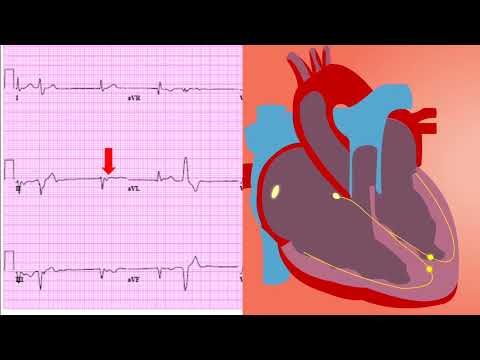🎬 Video Summary
This video provides a comprehensive overview of Pericardial Effusion, a critical heart condition. Learn about the signs and symptoms, delve into the pathophysiology, and understand the diagnostic procedures and treatment options available. This video is essential for medical professionals and students seeking a clear understanding of Pericardial Effusion.
🧠 Teaching Pearls
- Understand the key signs and symptoms that indicate Pericardial Effusion.
- Explore the underlying pathophysiology of fluid accumulation around the heart.
- Learn about essential diagnostic techniques used to identify Pericardial Effusion.
- Review the various treatment strategies available to manage and resolve Pericardial Effusion.
- Gain insights into the potential complications associated with untreated Pericardial Effusion.
❓ Frequently Asked Questions
Q: What are the most common symptoms of Pericardial Effusion?
A: Common symptoms include chest pain, shortness of breath (dyspnea), and fatigue. In severe cases, it can lead to cardiac tamponade, causing dizziness or lightheadedness.
Q: How is Pericardial Effusion diagnosed?
A: Diagnosis typically involves an echocardiogram to visualize the fluid around the heart. Other tests like chest X-rays, ECG, and CT scans may also be used to confirm the diagnosis and assess the severity.
Q: What causes Pericardial Effusion?
A: Pericardial Effusion can be caused by infections, inflammation, kidney failure, cancer, or injury to the chest. In some cases, the cause may be unknown (idiopathic).
Q: What is the treatment for Pericardial Effusion?
A: Treatment depends on the severity and cause. Mild cases may only require monitoring. More severe cases may necessitate pericardiocentesis (draining the fluid with a needle) or pericardiectomy (surgical removal of part of the pericardium).
Q: Can Pericardial Effusion be life-threatening?
A: Yes, if left untreated, Pericardial Effusion can lead to cardiac tamponade, a life-threatening condition where the fluid compresses the heart, preventing it from pumping effectively.
Q: How can I prevent Pericardial Effusion?
A: Preventing Pericardial Effusion often involves managing underlying conditions such as infections, kidney disease, and cancer. Regular check-ups and prompt treatment of related health issues are essential.
🧠 Key Takeaways
- 💡 Recognize the clinical presentation of Pericardial Effusion, including common symptoms and potential complications.
- 💡 Understand the diagnostic modalities used to confirm Pericardial Effusion and differentiate it from other cardiac conditions.
- 💡 Learn about the various treatment options available, ranging from conservative management to invasive procedures.
- 💡 Identify the underlying causes and risk factors associated with Pericardial Effusion.
- 💡 Appreciate the importance of early diagnosis and timely intervention to prevent life-threatening complications.
🔍 SEO Keywords
Pericardial Effusion, Heart Condition, Cardiac Tamponade, Pericardiocentesis, Pericardial Effusion Symptoms, Pericardial Effusion Diagnosis, Pericardial Effusion Treatment.
“`

